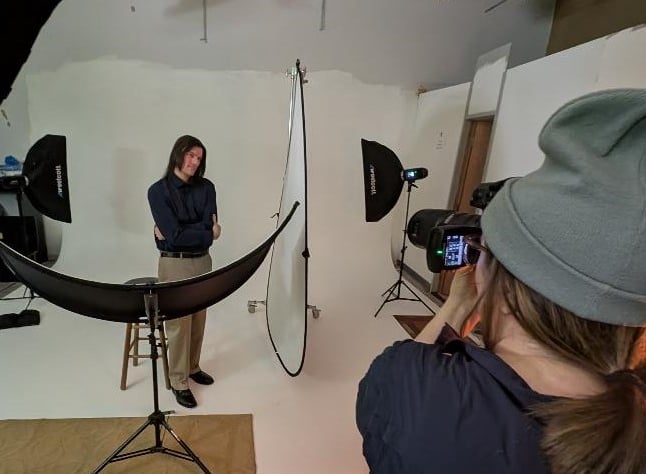News!
Our white cyc wall is
ready for you!
Call us at 614-352-3081 to use the cyc wall for your project.


Comprehensive Video Services
Video Production
Live Streaming Solutions
We specialize in corporate video, event recording, and documentary production, ensuring high-quality content tailored to your needs in Columbus, Ohio.
Our Emmy Award-winning team provides full-service video production, including studio rental and media education, to help you achieve your creative vision and engage your audience effectively.
From affordable live streaming events to professional video editing, we offer a range of services designed to elevate your projects and deliver exceptional results for clients across various industries.
Documentary Production


Rent Our Studio
Rates as low as $70/per hour (2 Hour minimum)
We offer a 28x26 video studio
Office set
Shoot on our greenscreen






Docuementary Projects
Our team has been producing Emmy Award winning documentary films for the last 10 years and are always looking for the next captivating project.


Last year, our documentary, "A Higher Law: The Oberlin-Wellington Rescue of 1858" won a Regional Emmy and had screenings across Ohio.




Recording reenactments for our upcoming true crime documentary, Blood Rites

Media Classes
Learn Video Production from script to screen






Classes offered:
Documentary Production
Screenwriting
Cinematography
Short Film Production
Creative Video Productions
Explore our Emmy-winning full-service video production projects, including corporate videos, live events, documentaries, and media education in Columbus, Ohio. Experience storytelling at its finest.
Our lates true crime documentary, Blood Rites - interviews
Corporate in the field recording

Columbus in our frame
Client Testimonials
Chelle Precht
Complete Research Connection
Adam Vaughn
Workflow Data Systems
I use PPM whenever I have video needs. Scott and his team are extremely professional and get exactly the shots I need (always watching for lighting and sound to be the best it can be). He's also great at editing for us too! I don't use anyone else, period.
Since 2009, Production Partners Media has been the mainstay full service audio/video production resource for my clients and myself. Together in that time we have worked on dozens of instructional, product feature and market research videos, always hit budget, never missed a deadline. Consistently great, in service and product delivery, you won't find a better production house in the mid west.




Our Process
Initial Consultation
1
2
Production Planning
3
Execution Phase
We begin with an initial consultation to understand your vision and requirements, ensuring we align our services with your goals for the project.
Next, we meticulously plan the production, including scripting, scheduling, and resource allocation, to ensure a seamless workflow and high-quality output.
Finally, our expert team executes the plan, capturing stunning visuals and audio, followed by post-production editing to deliver a polished final product that exceeds expectations.


Meet Our Team




Scott Spears
Christina Paolucci


Peter John Ross


Charlie the Cat

Our talented team at Production Partners Media brings creativity and expertise to every project, ensuring high-quality video production that meets our clients' needs and exceeds their expectations in Columbus, Ohio.
Video Production Lead
Producer - Photographer
Editing
Being cute
Partners
At Production Partners Media, we pride ourselves on collaboration. Join us in creating impactful videos, whether for corporate events, live streaming, or documentaries, and experience our Emmy-winning services firsthand.







Get in Touch
Contact Production Partners Media for inquiries about corporate video, event recording, live streaming, documentary production, studio rental, or media education. We're here to help you!
Cell: 614-352-3081
Studio: 614-888-4888








